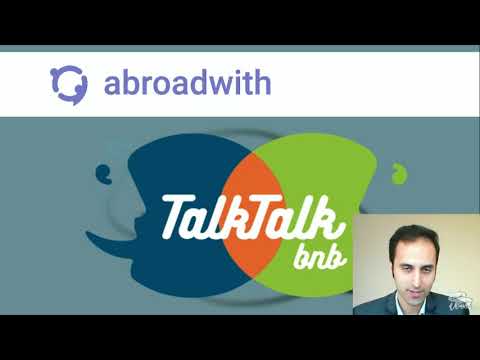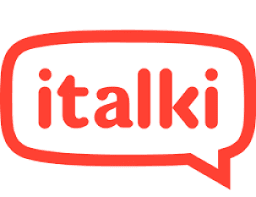Four language and communication skills
There are four language and communication skills: listening, speaking, reading, and writing.
These four skills of language allow an individual to comprehend and produce spoken language for proper and effective interpersonal communication.
Skills can be oral or written, and active or passive. Have a look at each skill’s characteristics:
- Listening – oral, passive
- Speaking – oral, active
- Reading – written, passive
- Writing – written, active
Listening
Listening is the first language skill we acquire in our native language.
It is what is known as a receptive skill, or a passive skill, as it requires us to use our ears and our brains to comprehend language as it is being spoken to us. It is the first of two natural language skills, which are required by every natural spoken language.
Knowing how to listen will help you:
- Comprehend natives when they speak
- Watch and understand movies, television, and online video
- Listen to the radio and podcasts
- Those who wish to listen and understand spoken language can learn through books, courses, and lots and lots of both intensive and extensive listening to native audio. This is common among conference interpreters.
Together with speaking, listening is fundamental to mastering a second language.
Speaking
Speaking is the second language skill we acquire in our native language.
It is what is known as a productive skill, or an active skill, as it requires us to use our vocal tract and our brains to correctly produce language through sound. It is the second of two natural language skills.
Knowing how to speak will help you:
- Engage natives in conversation
- Address audiences
Those who wish to speak languages with complex writing systems can sidestep the need to read and write by relying solely on romanization.

Reading
Reading is the third language skill we may acquire in our native language.
As with listening, it is a receptive, or passive skill, as it requires us to use our eyes and our brains to comprehend the written equivalent of spoken language. It is one of the two artificial language skills, as not all natural spoken languages have a writing system.
Knowing how to read will help you:
- Read newspapers, books, and magazines for news in Italian
- Interpret in-country signs, alerts, and notices
Reading is an excellent source of comprehensive input to improve your language comprehension and communication skills.
Those who wish to read the literature of a specific language can practice solely through books and vocabulary lists, without ever needing to speak to a native.
Surprisingly enough, reading is not indispensable to mastering a second language or even your native language. This is shown by the fact that many languages don’t even have a script.
For the Italian language, there’s an excellent collection of readings: Leggi Con Me. Here’s also a review of a trendy but inferior alternative, LingQ.

Writing
Writing is the fourth language skill we may acquire in our native language.
Speaking, it is a productive, or active skill, as it requires us to use our hands and our brains to produce the written symbols that represent our spoken language.
Along with reading, it is one of the two artificial language skills, as not all natural spoken languages have a writing system.
Knowing how to write will help you:
- Compose personal emails, letters, and text messages
- Write articles, essays, books, or other long-form texts
Those who wish to write in a foreign language can just practice making and imitating the symbols. This is especially common among calligraphers.

A combination of the four communicative skills
So, what are the necessary skills needed for effective communication in any language?
Well, this was a brief review of language and communication skills.
Now, are these skills covered equally in language learning plans?
Not always.
Usually, people read and listen but rarely speak or write.
Surprisingly enough, writing is not indispensable to mastering a second language or even your native language. This is shown by the fact that many languages don’t even have a script.
However, ideally, language students should combine all four skills without focusing on only one. For example, participating in a community forum can help you practice writing and conversational skills.
Here, I’ll give an outlook on the practical activities that you can do to keep a balance in your language study routine.
How to improve your communication skills in a foreign language?
Teachers and students need to understand the different types of oral activities in foreign language teaching as well as the different goals of activities.
Unfortunately, we often confuse oral practice with oral communication.
In general, the goal of guided practice activities is to improve accuracy, whereas the goal of communicative activities is to improve fluency.
While guided practice activities have their place in beginning foreign language teaching, they are no replacement for actual communication.
Communication skills in a foreign language require four different sub-competencies:
- Grammatical – the ability to create grammatically correct utterances
- Sociolinguistic – the ability to produce sociolinguistically appropriate utterances
- Discourse – the ability to produce coherent and cohesive utterances
- Strategic – the ability to solve communication problems as they arise
Speech production is made up of four separate cognitive processes:
- Conceptualization
- Utterance formulation
- Speech articulation
- Self-monitoring
Speaking as a communicative activity requires all four processes.
However, much oral practice in the classroom merely requires the repetition of prefabricated phrases that does not entail the first two cognitive processes.
This is not enough to improve your communication skills in a foreign language.

It’s fun to do things in a foreign language
Now you get what I mean about language and communication skills: communication is much more than language skills!
Now the difference between guided practice and communication is clear: it’s the difference between apparent communication and real communication.
The reason for this emphasis is obvious: the goal of communicative language teaching is “communicative competence,” which is achieved through the use of the foreign language for actual communicative purposes.
Common pedagogical practices such as reading dialogues aloud or performing oral drills all have their place, but should never be confused with oral communication.
Guided oral practice lacks communicative intent and creative use of the language. What you want is to improve your communication skills in a foreign language.
By the way, communication is not limited to language but also includes facial expressions and hand gestures.

A focus on listening skills in a foreign language
As we already mentioned, one of the necessary skills needed for effective communication in any language is listening.
Listening is the ability to accurately receive and interpret messages in the communication process.
Listening is key to all effective communication. Without the ability to listen effectively, messages are easily misunderstood.
As a result, communication breaks down and everyone can easily become frustrated or irritated.
Listening is not the same as hearing. Hearing refers to the sounds that enter your ears. It is a physical process that, provided you do not have any hearing problems, happens automatically.
Listening, however, requires more than that: it requires focus and concentrated effort, both mental and sometimes physical as well.
Listening is effective only if you understand what you’re listening to. That’s called comprehensible input.

The four stages of listening to a new language
A well-designed listening activity, if it is to improve your listening skills in a foreign language, should be broken down into carefully sequenced phases that build on each other:
- The initial pre-listening phase should prepare you by activating your background knowledge and clarifying your expectations and assumptions about the text
- Holistic listening aims to understand the gist of the listening text after the first or second listen
- Intensive listening aims at a detailed understanding of some segments of the text
- Post-listening aims to utilize the knowledge gained from listening
With the right audio material, you can also learn Italian in the car.
Pre-Listening
An ideal pre-listening helps you to activate the background information and language components needed to comprehend the text without “giving” this information.
You might want to make a list of vocabulary included in the passage before listening. I’d rather avoid looking at a transcription of the text unless it’s very hard.
The goals in this pre-listening phase are:
- To activate the vocabulary related to the topic
- To form some preliminary assumptions about the content of the text
- To pose some questions that could give a reason for listening
Global comprehension
“Global comprehension” refers to understanding the very general idea(s) or gist of the listening text after the first or second listen.
While you might pick up some details after the first listen, your aim should be to focus on the general meaning first, so that you can establish a preliminary framework that will enable you to get more details in the subsequent listens.
This is an important step to improve your listening skills in a foreign language.
“Holistic listening” means listening to the “whole” text while “segmental listening” involves listening to specific “segments” of the text.
Holistic listening should precede segmental listening, and it aims to allow students to develop strategies and build stamina in processing listening texts.
Segmental listening is very beneficial while doing intensive listening.
To become proficient listeners, you need to be exposed to tremendous listening input and you need training. Input is paramount for your listening skills in a foreign language
In doing while-listening activities to improve communication skills, it is important to remember the following:
- Allow students to listen to the scripted text two or three times as a whole before going to intensive listening
- Encourage students to focus on global meaning first and don’t pose questions that ask them for details after the first listen
- Make assumptions after the first listen and verify them after the second listen
- Focus your questions and attention at this stage on the segments of the texts that are accessible in terms of vocabulary and structures. You don’t need to “get” everything in the text.
Intensive Listening
In addition to global comprehension, we need to focus our attention on intensive listening.
This is crucial to help develop effective listening strategies and build bottom-up listening skills, in addition to the top-down skills that are emphasised in global listening activities to improve communication skills.
This is the natural development of the listening activity to improve your listening skills in a foreign language.
Intensive listening involves zeroing in on particular segments of the text, and this should come only after the students have developed global comprehension of the text.
Intensive listening may target different goals such as:
- Getting a more detailed understanding of some segments of the text
- Transcribing certain segments in the text
- Guessing the meaning of a word or phrase from context
- Looking at certain grammatical structures in the text to see how they can aid comprehension, etc.
Post-Listening
A post-listening activity represents a follow-up to the listening activity and aims to utilise the knowledge gained from listening for the development of other skills such as speaking or writing.
Like post-reading activities, post-listening activities allow for recycling and further activation of vocabulary and structures as long as they are interesting and engaging and are carefully thought out.

Focus on conversational skills in a foreign language
How to improve communication and language skills daily?
These are six ways to practice conversation in a foreign language without going abroad.
Remember, immersion is key when you want to learn a new foreign language. Make it a point to use these techniques every day, so that it becomes a part of your daily routine.

It is a given that you can learn a foreign language faster by going abroad, as you can only speak in a particular language.
That’s ideal to practice conversation in a foreign language. However, what if you are in a situation where you can’t go abroad due to personal commitments?
Does that mean you give up on your dreams to learn a foreign language and become fluent in it?
You might have heard discouraging advice like: “Before you can carry on a fluent conversation in a foreign language, you need to master pronunciation, study vocabulary, and develop good listening skills!”
Are fluent communication skills out of your reach? Are your attempts to communicate in a foreign language pointless?
No. Because there are several ways you can continue to practice your conversational skills.
Here are six ways you can practice conversation and learn a foreign language without going abroad:
Attend language exchange events
Are you looking for a practical way to improve your language competence and communication skills?
Many mid-large cities have language exchange events. There are various kinds of events called “language exchange”.
Any event that encourages speaking foreign languages with foreigners is a language exchange event.
That’s how in the Far East, many international white guys manage to flirt with local girls (I’ve been to some in Taipei, Taiwan).
Although I am a serial flirter, I also like studying languages more systematically. Anyway, any motivation is good to practice conversation in a foreign language.
“Serious” language exchange events are typically between one language and another (i.e. “English-Chinese language café”, “Italian-German tandem dinner”) or, if are open to multiple languages, have a table for each language, where people gather to speak that language and that only.
At some events, people sit down and are more like a study group, in others, you exchange leisurely conversations standing holding a wine glass. Good examples are Speakeasy in Berlin and Polyglot Cafè in Taipei.
Resist the temptation to switch to your language, stick with your target language, and results will come at once.
In Berlin, I used to go to an Italian-German language exchange event every few weeks, and all the Italians were speaking Italian, many were even speaking with other Italians only!
I was the only one posting all the Germans and taking notes. Everybody was amazed at the progress I made from week to week, and yet they kept chatting in Italian.

Change the settings on your apps and smartphone
When you use your smartphone, you generally configure the language to your native language.
If you want to practice the art of conversation, while learning new words at the same time, you should change it to a foreign language.
Even though this change is simple, it creates an immersive experience, encouraging you to complete your goal of learning a foreign language.
Chat with a language partner
Another great way to practice your conversational skills is to find a partner. Thanks to improvements in technology, you can talk to anyone in the world from the comfort of your home.
The partner doesn’t need to be a teacher because you just need to practice having friendly conversations. That’s already enough to practice conversation in a foreign language.
Immersion is key when you want to learn a new foreign language. Use these techniques every day, so that it becomes a part of your daily routine.
Attempts to communicate in a foreign language lead to mistakes. That’s totally normal in communication in a foreign language.
As time goes by, you will get the hang of the foreign language, allowing the words to flow naturally. You will also learn colloquial phrases, which will make you sound like a native.
Label everything in your house
The house is one place where you spend a large portion of your time. Why don’t you convert it into a learning hub so that you can be productive, while you go about your day?
Take time off and start labeling everything in your house with the help of Post-it notes.
By going through these notes every day, you will learn the foreign language faster than expected. Talk to yourself and it’s like practicing conversation in a foreign language.
Listen to the radio and podcasts
Another way to practice conversation is to listen to the radio and podcasts in a foreign language.
The advantage of using these types of media is that you can listen to them while you are on the go. Also, you don’t have to spend a lot of money on them, as most of the material is free.
Yes! You can practice conversation in a foreign language for free.
Start reading in a new language
Why don’t you start living like a local so that you can get a completely immersive experience while learning a foreign language?
For starters, find out which news channel is popular among the natives of the foreign language and follow the same.
Not only will you be able to increase your vocabulary, but it will also act as a confidence booster.
A focus on writing skills in a foreign language
What are the necessary skills needed for effective communication in any language? One is writing.
We all want to master a foreign language, and we can master a foreign language by writing. You don’t need full control of a new language to be creative.
Control is achieved by having a wide vocabulary and a full understanding of the mechanics of a new language’s grammar.
Learners can be creative with their language when they only have a little to play with.
If they do that at the start, when they know more they will also make better use of that.
We only have to think of how a child plays more imaginatively with a cardboard box than they do with the latest computer toy to realize this.
To master a foreign language by writing, let’s understand the nature of this skill before we look into some ideas to hone it in a foreign language.
The nature and purpose of writing
Writing is a productive skill because the writer creates a new language and does not only interpret existing information.
Here are some aspects that determine what and how we write:
- Letters, computers, cellphone texting, etc. require different styles of writing and communicative conventions
- Poetry, short stories, lecture notes, etc.
- Subject-verb agreement, tense, aspect markers, references, etc.
- Ways to greet in a letter, appropriate ways of phrasing ideas, etc.
We use writing for a variety of everyday communicative purposes, from making a shopping list to writing essays for school or creating reports for a presentation at work. Common uses of writing include:
- Shopping Lists
- Essays & Term Papers
- Poetry & Song Lyrics
- Prose, Short Stories, Novels
- Notes
- E-mail & Text Messages
- Letters & Postcards
- Personal Journals & Blogs
Accordingly, there are several design principles to consider when planning for writing in a foreign language:
- Language activities to improve communication skills should reflect plausible, real-life communication
- Writing in a foreign language can have the same wide range of purposes as writing in your native language
- Writing in a foreign language should be taught systematically, not as a random thing used here and there only as a support task
To master a foreign language by writing, these points are important to consider to design more effective writing tasks:
- Fulfill the pedagogical purposes of the assignment (e.g., do not say that the task practices narration when all it does is drill the past tense)
- Can be successfully completed by the students
- Students learn something they can actually use to communicate in authentic situations
The benefits of creative writing for learners
Creative writing aids language development at all levels: grammar, vocabulary, phonology, and discourse.
It requires learners to manipulate the language in interesting and demanding ways in attempting to express uniquely personal meanings.
In doing so, they necessarily engage with the language at a deeper level of processing than with most expository texts.
The gains in grammatical accuracy and range, in the appropriacy and originality of lexical choice, concerning sensitivity to rhyme, rhythm, stress, and intonation.
In a way, texts hanging together is significant and lets you gradually master a foreign language.
Much of the teaching we do tends to focus on the left side of the brain, where our logical faculties are said to reside.
Creative writing emphasizes the right side of the brain, with a focus on feelings, physical sensations, intuition, and musicality.
This is a healthy restoration of the balance between logical and intuitive faculties.
It also affords scope for learners whose hemisphere dominance or learning-style preferences may not be intellectual or left-brain dominant, and who, in the normal process of teaching is therefore at a disadvantage.
Here are some benefits of creative writing for learners who want to master a foreign language by writing:
- Creative writing enables a writer to manipulate the language in unusual ways, to express something. This engages you on a much deeper level of processing a new language, which gives you better results in return.
- It also enables you to break away from monotony. When students or learners are trying to tackle a new language, it’s easy to get frustrated and bored with the same old curriculum.
- Creative writing enables you to work on your cognitive strategies as well, and improve through analyzing and trying out new ways to formulate meanings. That is, once you’re able to let go and accept the fact that language learning is a process that entails lots of mistakes.
Make a habit of reading and writing
In order to reap all these benefits and master a foreign language by writing, you must be able and willing to learn consistently.
No matter what method you may use, every learner reaches a point when they are satisfied or simply bored with the same method of learning. Creative writing, as any other instrument used for acquiring a new language, needs to be done consistently.
Release your creativity. Think of a new language as a game. Don’t be afraid of making mistakes.
A part of being able to be creative and play around with a new language actually means you’re going to make mistakes along the way. Push your boundaries.
Kids love playing around with words, but once you become an adult you should be able to play around even more effectively because your vocabulary expands and you can write extensively.
Writing is a complex process that demands of authors to have clear ideas they wish to communicate
Become an avid reader. Reading widely in a foreign language is one of the best ways to grow your vocabulary, strengthen your writing skills, and absorb the language’s grammar.
In each language I study, I try to read everything I can get my hands on: novels, newspaper articles, poetry, comics, instruction manuals, and the list goes on.
Ask a native speaker to edit your writing. Post your writings on Italki. Your journal entry will appear to native speakers of that language who will leave you helpful feedback and point out any errors.
In return, you can help edit other users’ entries that are written in your native language. By receiving feedback, you can master a foreign language.

Four ideas for creative writing in a foreign language
Pre-writing
Pre-writing tasks review and build students’ knowledge of relevant vocabulary, relevant grammar points, and, most importantly, students’ background knowledge since that is what really generates thoughtful and interesting written work.
Pre-writing tasks are a crucial element of successful writing instruction.
Pre-writing activities may take many different forms. Here we review a few effective ways to get the writing process started: associograms, prompts, interviews, and reading/listening activities.
- An associogram is a collection of lexical items and/or ideas that relate to a topic.
- A well-chosen picture or song can foster the learner’s creativity. A few questions in addition to the picture can really help ideas flow. Written prompts can help students hypothesize what is going on in the picture and generate interesting content.
- Interviews can serve to generate ideas for writing and move learners beyond their own experiences. It usually works best when some of the questions are unexpected or “hook” students’ interests.
- Responding to texts. When language learners respond to texts, whether written or oral, they can learn new vocabulary, expressions, grammatical structures, and valuable pragmatic information (e.g., how to structure an e-mail, a movie review, etc.).
Alternate endings
Alternate ending activities can be used with any text (from stories, music, or film). For known texts, students can simply come up with a different ending. Or they can predict an ending of a story from a reading.
Similarly, students write a sequel to the story that takes place five years later. Or have students re-write the story (or parts of the story) from the perspective of one of the minor characters.
Short stories
Short stories can include a modern fairy tale or a parable, a moment-in-life description, or even a mystery. Ideally, the students read a mystery story beforehand, to learn relevant vocabulary, grammar, and narrative structure before they write.
Production tasks
Production tasks for example are Wiki entries, blogs, a brochure advertising study abroad programs. These activities improve communication skills that might be better suited for intermediate or more advanced learners.
Writing is useful and fun
Writing deserves systematic and continued attention in the foreign language classroom in its own right, not merely as a support skill for listening, reading, or speaking.
Writing is a complex process that demands authors to have clear ideas they wish to communicate, to take note of their audience, to be aware of the purpose of the texts they produce, and to use the linguistic aspects of language necessary for conveying meaning effectively.
Writing tasks should reflect a variety of purposes for writing in real life.
Writing is essential for developing literacy and can help language learners connect the foreign language to the meaningful expression of ideas.
By incorporating creative writing into your study schedule, you can gain a sense of autonomy over the language. You can master a foreign language by writing and have fun doing that.
Here’s a unique language learning planner for the Italian language to come up with a plan in 3 minutes.
Improve your foreign language through creative writing
Creative writing is an excellent activity to improve your writing skills in a foreign language for many reasons:
- It’s a chance to put into practice words and grammar patterns that you learned recently, and expand your vocabulary by looking up new words in the dictionary if needed.
- It’s a chance to check the spelling of words you’re familiar with but never use in writing.
- It’s an intimate time to reflect on the language you’re studying. Ask yourself: “Why do I need to use this tense?”, “How can I express this idea?”, “How do I put these words together in a sentence?”, “Are these words related to each other?”.
- It’s a way to keep yourself motivated, especially by writing about topics of your interest. Writing itself is a pleasure, but you can also take pleasure in sharing your writings with your foreign friends and teachers.
- If you read aloud what you’re writing and check the pronunciation online (on Google Translate or other websites), it even counts as speaking and reading practice.
In particular, creative writing is useful to improve your writing skills in a foreign language because it:
- Provides interesting, lively opportunities for language practice.
- Is not uncontrolled and uncontrollable verbal doodling but requires precision and accuracy in expression and vocabulary.
- Allows us to focus on specific ideas, forms of literary texts
- Is not intimidatingly out of reach for most of us but creates opportunities for students to explore their language and their imagination
- Is not a substitute or a replacement for oral communication but represents a lively, stimulating way to give new meaning to a somewhat lesser-used language skill
Ideally, you might want to have your writing checked by your teacher, language exchange partner, or volunteers online, but the act of handling new words alone already helps to memorize.
Your writing skills in a foreign language will naturally improve with daily practice.
The best way to put those words into practice is to use them in conversation.
I personally start every language lesson, both as a student and as a teacher, by repeating key points from the previous lesson, which includes making sentences with the words.
You can do the same during your language tandem. However, making sentences by yourself works, too. Since writing skills in a foreign language are often overlooked, creative writing is a good habit to pick up.
Write about what keeps you motivated
Write about what you’re interested in. It doesn’t have to be a “basic” topic, like buying groceries or tickets. I usually write about philosophy, society, and romance.
You might want to write about surfing, cats, or physics. Your topics of interest are your basics because it’s likely that you’ll have a chance to talk about them in real life.
For the same reason, I never take classes or group lessons: I might just not be interested in the topics that they deal with in standard curriculums.
Family? I don’t want one. Shopping? I hate it. Sports? I don’t watch it. Entertainment? I haven’t watched TV for 16 years.
It’s certainly easier to say things if you know a lot of words, but you can still get by through roundabouts. For example, I can still say that “my dad’s sister got married” or that “the guy threw the ball in the hole” if I ever need to.
I don’t like wearing clothes, not to mention learning the name of clothes in other languages. I’d rather describe the shape or the color of the clothes I want to point at.
Post your homework on Italki

Any time is good to hone up your writing skills in a foreign language. You can always write, as long as you have a pen and a sheet of paper.
In this age of language earning apps, this might sound old-fashioned, but actually, there’s plenty of research indicating that you memorize information better if you take notes by hand.
This applies to writing skills in a foreign language, too.
However, there’s at least one drawback in leaving your writings on paper. It’s not practical to share them and have someone correct them unless you have a tutor who patiently does that for you.
You can have a native speaker check your homework for free!
That’s why I always post my homework on Italki. Italki is the largest online language learning community and, among other features, has a section to post your homework on the website and have other users as you correct it for free.
Yes, you can have a native speaker check your homework for free! This way, you also feel motivated because you know that someone is going to read it and even correct it for you.
On Italki’s website, you find the “notebook” page under the “community” item in the top menu.
If you’re new to Italki, sign up from this link to get 10US$ credit for your first lesson, if you ever decide to take lessons on Skype (registration is free).
To take a live lesson online, you need the following equipment:
To keep your focus and motivation you need:

Google Translate and Search are your friends
If you’re still learning a new language, chances are that you’re not sure about how to spell words, or can’t come up with the right word in that language.
You’re here to improve your writing skills in a foreign language, but if you’re writing alone you can’t ask your teacher or language, exchange partner. For that, ask your best friend: Google Translate.
Don’t get me wrong. I’m not suggesting you copy and paste every funny translation that Google Translate churns out. Google Translate can be a useful tool to support your writing practice and overall learning experience. This is how I use it:
1. Check the spelling

Google Translate tells you real-time if something looks wrong in the sentence. While it’s still weak at analyzing long sentences, it works very well with spelling. Accept its suggestions.
2. Look up words in a dictionary
Enter a single word in the text box, and Google will return a dictionary-like list of all known definitions, including synonyms. Fast, uh?
3. Look up a word in context

Google Translate looks dumb but it can be pretty smart. If you provide a word in the context of a phrase or sentence, Google will select the most context-sensitive definition.
For example: if you type in the Italian noun coda, you will see that it means “tail”. Now let’s provide more context.
Type in coda di gatto and it will translate into “cat’s tail”. But type coda in autostrada and it will translate into “queue/line on the highway” (traffic jam) because it’s found next to the word “highway”.
The more context you can give Google, the better your translation will be.
Another example: if you type in the Portuguese noun cara, you will see that it means “face”, “visage”, “appearance”, but also “guy”. Now let’s provide more context.
Type in lavei a cara and it will translate as “I washed my face”. But type aquele cara alto and it will translate to “that tall guy”.
4. Answer usage questions

Test your sentence in the real world. A quick regular search on Google will answer grammar questions, such as:
- Syntax: to find out which preposition to use (“in the purpose of” or “with the purpose of”?)
- Word order: in Italian, adjectives come before or after the noun they point at. Is it “bella vita” or “vita bella”?
- Usage: like finding out which of two similar words is more commonly used (“a deep insight” or “a profound insight”?). Run a search on both phrases and compare the number of hits.
To make sure you get the most accurate results, it helps to go to your Google search settings and under Search Language, select your target language and native language.
Writing practice is simple, useful, and fun
Writing is an excellent activity to improve your language skills, not limited to writing. An excellent way to improve your writing skills in a foreign language is through creative writing.
Feel free to write about anything that keeps you motivated, regardless of how rare or hard that topic is.
Either write by hand or post your homework on Italki to have native speakers correct it for free.
Use Google Translate and Google Search to support your writing practice and overall learning experience (but don’t cheat!).
Go unleash the writer within!

Tips for foreign language teachers
In the next paragraphs, we’ll present some ideas for teachers to improve their lessons aimed at improving their students’ communicative skills.
We’ll focus on task-based learning, communicative tasks, and task planning.
We’ll also give some guidelines and tips on how to prepare an awesome lesson.
What is task-based language learning?
Task-based language teaching (TBLT), also known as task-based instruction (TBI), focuses on the use of authentic language and on asking students to do meaningful tasks using the target language.
It is a student-centered approach to second language instruction. It is an offshoot of the communicative approach, wherein activities to improve communication skills focus on having students use the authentic target language in order to complete meaningful tasks, i.e. situations they might encounter in the real world and other project-based assignments.
These projects could include visiting the doctor, making a phone call, conducting an interview in order to find answers to specific questions, or gathering information to make a poster or advertisement.
Assessment is primarily based on the completion of real-world tasks rather than on the accuracy of prescribed language forms.
This makes TBLT especially popular for developing target language fluency and student confidence. It’s a branch of communicative language teaching (CLT).
A task-based class makes language in the classroom truly communicative, rather than the pseudo-communication that results from classroom activities with no direct connection to real-life situations.
In task-based teaching, the focus is not on grammar—you have already introduced your students to necessary constructions earlier in the chapter or unit, as well as to the vocabulary they will need to complete the task—but rather on helping students develop linguistic strategies for completing the assigned tasks within the constraints of what they know of the target language.
Because the emphasis is on spontaneous, creative language use, whether spoken or written, rather than on absolute accuracy, assessment is based on task outcome.
Any attention to form, i.e., grammar or vocabulary, increases the likelihood that learners may be distracted from the task itself and become preoccupied with detecting and correcting errors and/or looking up a new language in dictionaries and grammar references.

Task-based teaching improves communication skills in a foreign language
The process of task-based learning itself teaches important skills. Students learn how to ask questions, how to negotiate, and how to interact in and work within groups.
Within this group work, they are able to observe different approaches to problem-solving as well as to learn how others think and make decisions.
These are all skills that people need in order to be successful in the real world, regardless of which language(s) they use there. Communication is much more than language skills.
In addition, task-based teaching provides students with the linguistic components they will need to accomplish these real-world tasks.
These include: how to introduce themselves, how to talk about themselves, their families, their interests, their likes and dislikes, their needs, etc. in the right socio-cultural context.
In task-based teaching, students come to the realization that language is a tool to tackle and (re)solve real-world problems.
By moving the focus away from mechanical drills—although such drills do still have their place even today in language teaching, especially when teaching highly inflected languages—task-based teaching focuses on communication and interaction, using appropriate language at the correct time.
That’s necessary to improve communication skills in a foreign language.

Designing communicative tasks to improve foreign language skills
A task for language and communication skills has the following characteristics:
- A task involves a primary focus on meaning exchange
- A task has some kind of ‘gap’
- The participants choose the linguistic resources needed to complete the task
- A task has a clearly defined, non-linguistic outcome
- The outcome is attainable only by the interaction among participants
- A task has a mechanism for structuring and sequencing interaction
- A task requires an endeavor to comprehend, manipulate, and/or produce the target language
Language competence and communication skills: 3 types of tasks
There are three main categories of tasks aimed at improving communication skills in a foreign language:
- Information-gap activity. It involves the transfer of given information from one person to another.
For example; pair work in which each member of the pair has a part of the total information (for example an incomplete picture) and attempts to convey it verbally to the other. - Reasoning-gap activity. It involves deriving some new information from given information through processes of inference, deduction, practical reasoning, or perception of relationships or patterns.
One example is deciding what course of action is best (for example cheapest or quickest) for a given purpose and within given constraints. - Opinion-gap activity. It involves identifying and articulating a personal preference, feeling, or attitude in response to a given situation.
For example, taking part in the discussion of a social issue. The outcome differs between individuals or on different occasions.
Task’s demands
Teachers and students sometimes spend too much of their time talking about the foreign language and precious little time actually doing things in the foreign language.
We need to create more opportunities in their classrooms for students to develop oral communicative competence. This is linked to students’ gratification. They’ll experience how motivating it is to solve tasks in a foreign language.
A communicative task places three demands on the student: cognitive, linguistic, and communicative. It is important to strike a balance when designing a task: not too hard, not too easy.
- Cognitive demands (familiarity with topic; memory requirements; processing demands)
- Linguistic complexity (vocabulary, grammar, textual/genre conventions)
- Communicative stress (face-threatening topic or task; the number of people involved; relationships of those involved)
Design and practice
The way a communicative task is structured has a great deal to do with its ultimate success in the classroom and the improvement of communication skills in a foreign language.
When considering how to structure a task, designers should ask themselves these four questions:
- What information is supposed to be extracted from the interaction by the learners?
- What are the relevant subcomponents of the topic?
- What tasks can the learners carry out to explore the subcomponents? (e.g., create lists, fill in charts, etc.)
- What linguistic support do the learners need to perform some set of workplans?
Guidelines for teachers
Here are some guidelines for implementing communicative activities to improve communication skills in a foreign language:
- Make the goal clear from the beginning
- Involve all participants equally
- Make sure students are adequately prepared
- Provide clear instructions and examples
- Make an effort to mix groups
- Assign activities that are relevant and interesting to students
- Circulate, circulate, circulate
- Teach group interaction skills
- Hold group accountable for completing the task on time


















